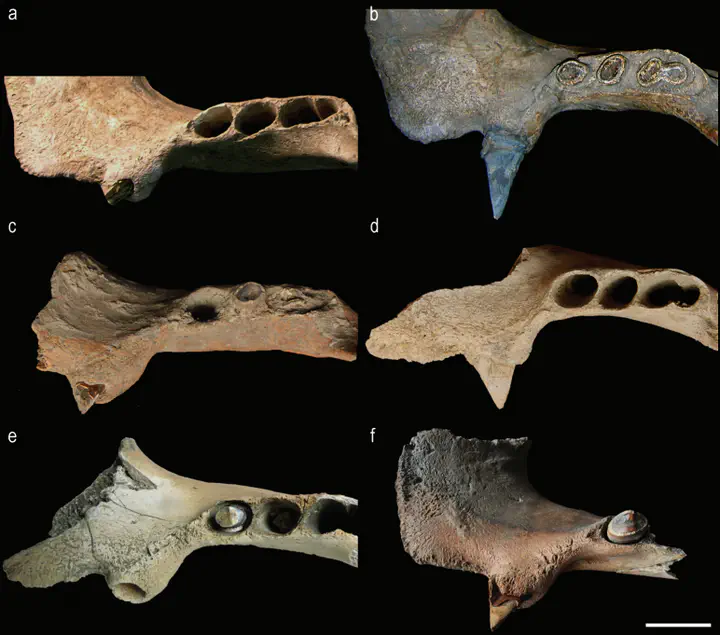Sexual dimorphism in the fossil ground sloth Lestodon armatus (Xenarthra, Folivora)

Abstract
Mylodontidae (Mammalia, Xenarthra) is a family of ground sloths widely distributed in the South American fossil record, with members also present in Central and North America. Within the Mylodontidae, Lestodon armatus is the largest species, with an estimated body mass of more than three tonnes. This work focuses on the enlarged lower caniniforms of L. armatus as possibly exaggerated sexually dimorphic structures. Lower caniniforms from the late Pleistocene of Argentina, Uruguay, and Bolivia were studied using specimens from seven palaeontological collections. The possible sexual dimorphism in the caniniforms and its implications regarding the existence of sexual selection was assessed through morphometric analyses. The results support the existence of sexual dimorphism in L. armatus. Sexual dimorphism in an exaggerated structure in a large mammal suggests the existence of sexual selection, via competition between males or female mate choice, resulting in the evolution of the dimorphic structure. In L. armatus, the enlarged caniniforms would correspond to males and could have functioned as armaments in intraspecific fights or ornaments for sexual display. Based on observations in extant mammals, a polygynous mating system is proposed as highly probable in L. armatus, although the existence or composition of social groups cannot be certainly determined.